Contents
Carrots, like any other vegetable, take root better in well-prepared and heated soil, as well as at favorable air temperatures. The timing of sowing root seeds for each region is determined individually. The warmer the area, the earlier you can start planting and, of course, get a crop faster. Today we will consider the best varieties of carrots for Siberia, which, even in such harsh conditions, can bring a good harvest.
Will carrots grow in Siberia

If we consider Siberia as a whole, then on its large territory there are different climatic conditions, and most often they are severe. The indicator of soil fertility is also far from ideal. But still, some areas allow farming. Breeders have bred many varieties and hybrids of different crops adapted to the local climate. Carrots are no exception and can often be found in Siberian vegetable gardens. The root crop is hidden in the ground, which allows it to endure frosts in the air up to -4оC. Some varieties can withstand up to -8оC, but carrots exposed to such a low temperature are unsuitable for long-term storage, moreover, starch will turn into sugar.
Choosing the time to sow the seeds
There is no need to rush to sow carrot seeds in Siberia. Nature is unpredictable, and returning night frosts can slow down the germination of grains. There are two seasons for planting carrots – spring and autumn. Each grower chooses the planting time for himself individually. Here they take into account the purpose of the crop, the weather conditions of the area, and also take into account the agricultural technology of the selected variety.
Features of sowing before winter
Autumn crops allow you to get very early harvests of carrots that can be used fresh. That is, the root crop is just in time for the time when last year’s harvest in the basement is already running out, and the spring crops have not even begun yet. Such root crops are stored for a short time, and this is their only minus. But for those who love varieties of large carrots, this method of growing will be to their liking. Winter varieties produce much larger carrots than those intended for early spring planting.
In the soil under a layer of snow, the grains are well hardened, the fruit that has set is not afraid of many diseases, they are gaining strength before the first pests appear. Another plus is that autumn sowing does not require soaking the seeds and drying them. Carrots ripen very early, which allows other garden crops to be planted in its place in the summer. For autumn crops, it is necessary to purchase winter varieties, which should be indicated on the packaging. November is considered the optimal sowing time, but in some areas with a specific climate, October planting is done.
Features of spring crops
Most often, in all regions of Siberia, vegetable growers adhere to spring crops. Carrots will grow smaller than from autumn crops, but they acquire the property of long-term storage. The vegetable is suitable for winter harvesting, freezing and for any type of processing. Spring sowing is distinguished by a more complex procedure, requiring careful preparation of seed material, however, carrots are more saturated with vitamins.
The optimal time for sowing seeds is the third decade of April and the whole of May. The beginning of sowing for each region is determined individually. The soil in the garden should be damp, but not in the consistency of mud. On the street, round-the-clock warm air temperature should be established. Some of the excess moisture left after the winter will evaporate from the warmed earth. Here it should be taken into account that the long thawing of the earth after the Siberian winter is accompanied by the multiplication of many microbes and pests. Therefore, before sowing seeds, it is necessary to introduce biological preparations containing active microorganisms into the soil.
Overview of the best Siberian varieties
Carrots are considered an unpretentious vegetable and can be grown in almost any region. But still, the varieties are divided into more or less productive, and some may not even take root in the Siberian climate. Now we will try to identify the best varieties suitable for growing in Siberia.
Losinoostrovskaya 13
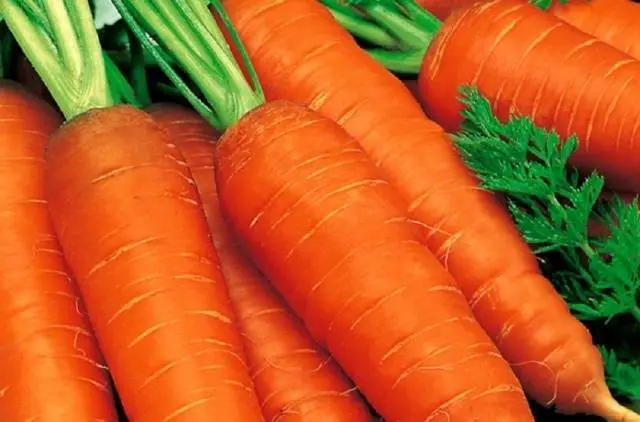
The harvest of this variety begins 90 days after the germination of the grains. Carrots grow to a maximum of 17 cm in length and weigh about 170 g. The beautiful appearance of the vegetable accompanies good consumer demand, so the variety is excellent for vegetable growers who sell their crops. The yield is very good, from 1 m2 plot you can collect 8 kg of fruit. The variety is resistant to cold, which allows you to sow seeds in early spring and before winter. The value of the pulp lies in its dietary direction.
Unparalleled

After germination of the sown grains, the crop can be harvested in about three months. Cone-shaped fruits with a rounded end with a traditional color have a reddish tint. Carrots grow 17 cm long and weigh about 180 g. The flesh inside is less bright than the skin itself. The root crop is characterized by friendly ripening, which allows you to immediately remove all carrots from the garden and put them in long winter storage.
Nantes
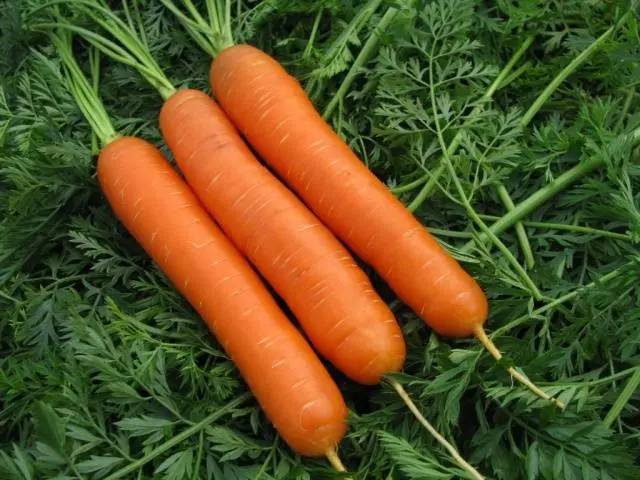
Carrots will be ready to eat after 3-3,5 months. The root crop grows to an average length of maximum 14 cm with a rounded end. The approximate weight is 110 g. The disadvantage of the variety is the incomplete immersion of the root crop into the ground. From this, the part of the carrot that protrudes to the surface turns green, but the natural orange color dominates inside. As for productivity, from 1 m2 plot, you can take up to 6,5 kg of root crops. Carrots are characterized by long-term storage until spring.
Dayana
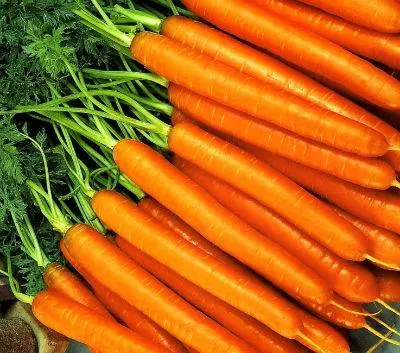
The ripening of carrots of this variety is later and occurs after about 120 days. A medium-sized root crop with a sharp end weighs approximately 160 g. The yield is not bad, from 1 m2 guaranteed you can get 6 kg of vegetable. Under good weather conditions, the yield will increase to 9 kg/m2. Carrots lend themselves perfectly to winter storage in basements, suitable for all types of processing. The content of nutrients in the pulp determines the variety to the dietary direction.
Nastena
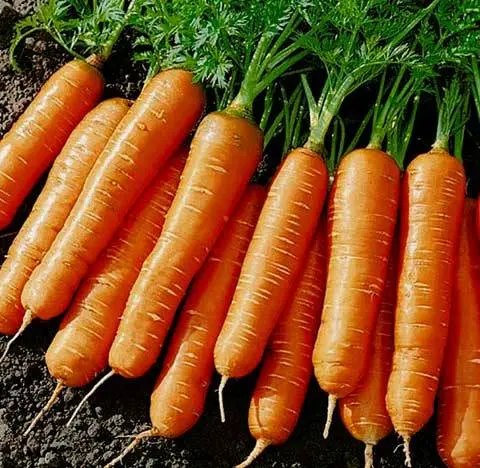
The carrot crop of this variety ripens in about 2,5–3 months. Smooth without any flaws, the fruit with a rounded end grows up to 18 cm in length. Moreover, most mature carrots have the same size. The maximum weight is 150 g. Inside the pulp there is a very thin core. The crop lends itself well to long-term storage. On your site you can grow about 6,5 kg / m2 root crops. The seed material of this variety is intended for spring and autumn crops.
Nevis F1

The characteristic of carrots is a bit similar to the Nantes variety, despite the fact that it is a hybrid. Harvest ripening occurs after 110 days. A root crop with a rounded end and smooth skin grows 18 cm long and weighs about 160 g. The crop lends itself well to long-term storage. In a dry, cool basement, carrots can mature until a new early crop ripens. From the garden you can collect up to 9 kg / m2 root crops.
Narbonne F1
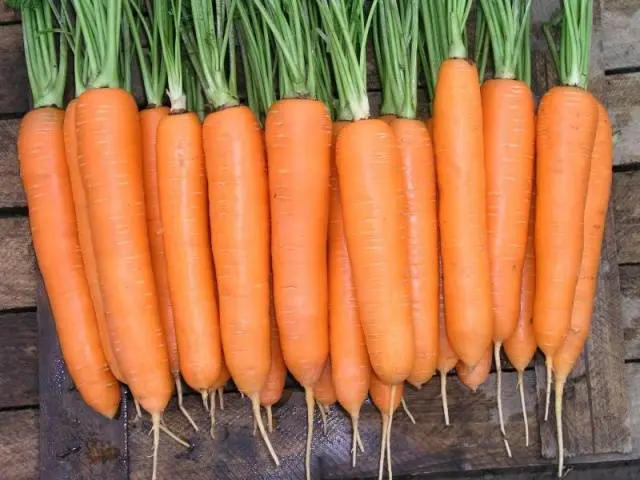
Carrots can be eaten after about 100 days. The hybrid bears fruits with a rounded top 22 cm long, weighing about 250 g. The root crop is covered with a smooth skin, does not crack. The tops are practically not affected by pests and viral diseases. On its own plot, the yield will be at least 7 kg / m2, but with good weather and proper care, you can achieve great results.
Reviews of Siberian housewives about good and bad varieties
Advertising in a seed store of different varieties of carrots is very good, but it is better to find out what Siberian housewives think about it. Many years of experience in growing different varieties of carrots contributed to the accumulation of certain knowledge. They will be useful to novice vegetable growers, so let’s read the reviews of these people.
The following carrots were attributed to the successful varieties of the hostess:
- Hybrid fruits are considered super-sweet and very tasty carrots. “Abrino F1”. The root crop was very fond of children, both in general and in the form of juice.
- Hybrid “Bersky F1” inferior in sweetness to the Lakomka variety. However, carrots are very tasty and under any weather conditions you can get a good harvest.
- Lovers of varieties of large carrots will delight “Giant of Ross”. Root crops have a red tint of pulp. Very beautiful tops can decorate the garden near the house.
- Parents respond well to the variety “Children’s”. A medium-sized, very tasty carrot is enough for a child to eat. Seeds are distinguished by friendly shoots.
- Root varieties “Emperor” grow too long. Very tasty carrot, but thin in Siberian lands. The variety is very fond of fertile soil and, with its correct composition, the fruits will grow thicker.
- Super early variety “Gourmet” allows you to eat juicy fruits in July. Carrots grow large, very sweet, and can be stored well.
- The variety bears large fruit “Rote Riesen”. Carrots are delicious and sweet.
- Very successful variety “Solomon” able to bear fruit in damp, even clay soil. Carrots are delicious, juicy with a beautiful appearance.
- It is very convenient to plant seeds of a variety on a tape “Forto”. After germination, thinning of sprouts is not required. Carrots grow even with a high sugar content, they are perfectly stored.
- Siberian housewives managed to grow carrot varieties “Gypsy” weighing up to 1 kg, although the weight of the fruit is 280 g according to the characteristics on the package. The root crop does not have rings, it can be stored for a long time, it is very sweet.
Reviews about varieties are different, but the most negative feedback falls on two carrots:
- Grade “Without a core” brought very long and thin fruits. The shape of the carrot is uneven with clearly protruding bumps. When planting in April, the crop was harvested at the end of September.
- Despite the stated name of the variety “sweet” brought unsweetened fruit. Root crops grew small and thin. The pulp even has an unpleasant aftertaste.
Maybe in other regions these two varieties will bring delicious fruits, but the Siberian housewives did not like them.
General overview of Siberian varieties by ripening period
So, we have already identified the best and worst varieties, now let’s just review the carrots of different ripening periods.
Early varieties zoned in Siberia
All early varieties are considered the most successful for Siberia, as they have time to fully ripen in a short time.
Alenka
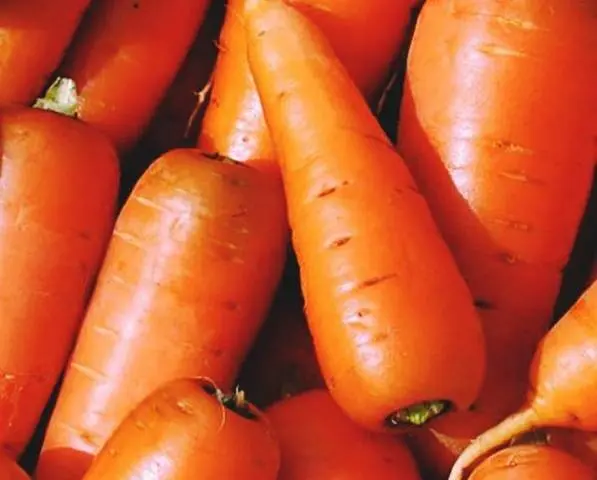
A very early variety that can be harvested in tufts after 50 days. Carrots of medium size grow about 12 cm in length. Taste qualities are excellent.
Amsterdam
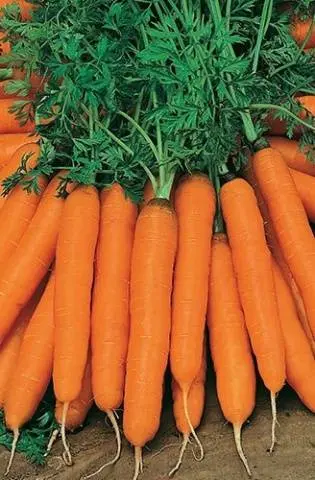
These carrots can be grown in closed beds. An early ripening vegetable has a thin core and crispy tender flesh. Carrots grow up to 12 cm long, do not crack.
Belgian White
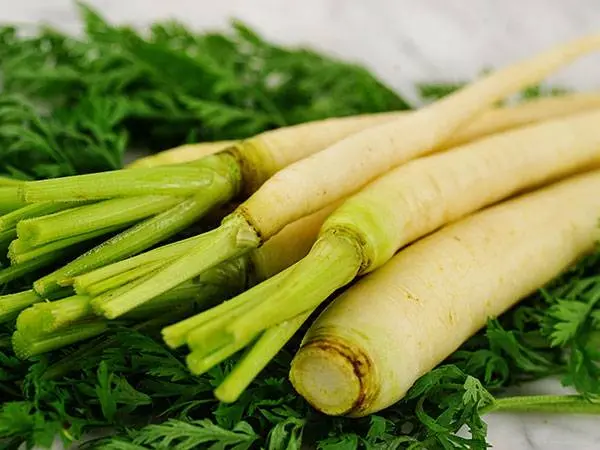
The variety produces peculiar white fruits. Carrots are more suitable for heat treatment in the process of preparing hot dishes. The root crop acquires a characteristic aroma of spices.
Bangor F1
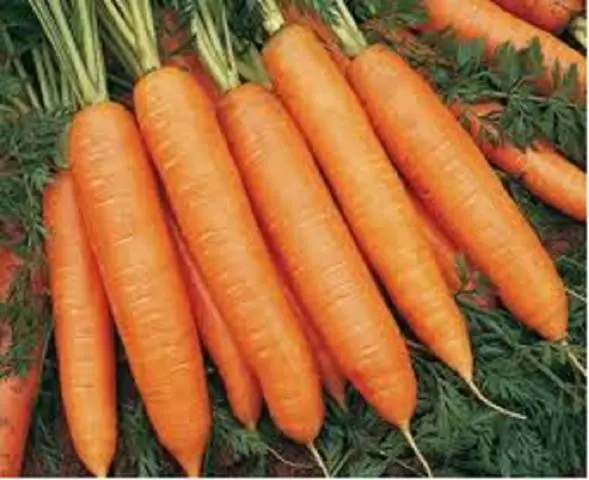
Carrots grow thin and quite long. The hybrid belongs to the early ripe group of vegetables. The mass of one root crop is about 200 g.
Dragon

The variety bears specific fruits of purple color. However, the core itself has a traditional orange color. Carrots have an unusual aroma that disappears after heat treatment. This vegetable is more for an amateur.
Carotel Parisian
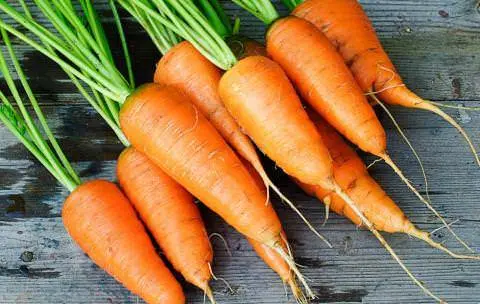
A variety known to all gardeners for a long time brings early harvests. Carrots are not long, one might even say egg-shaped. In terms of yield, the variety lags far behind, but the value of the root crop is in the dessert pulp, which is loved by many children.
Coloring F1
The fruits of this hybrid are completely immersed in the ground, which eliminates the greening of the skin near the tops. Carrots ripen early. The mass of one root crop is a maximum of 200 g.
Medium varieties zoned in Siberia
Not a single gardener can do without growing medium varieties of carrots. These root crops are already suitable for storage, conservation and processing.
Altair F1

The hybrid is very resistant to low temperatures, which allows you to get high yields in Siberian conditions. Carrots have a thin core, the pulp contains a large amount of sugar.
Viking

Carrots grow long, some specimens reach 20 cm. Crispy pulp contains a lot of carotene, the core is thin and juicy. The crop can be stored for a long time.
Vitamin 6
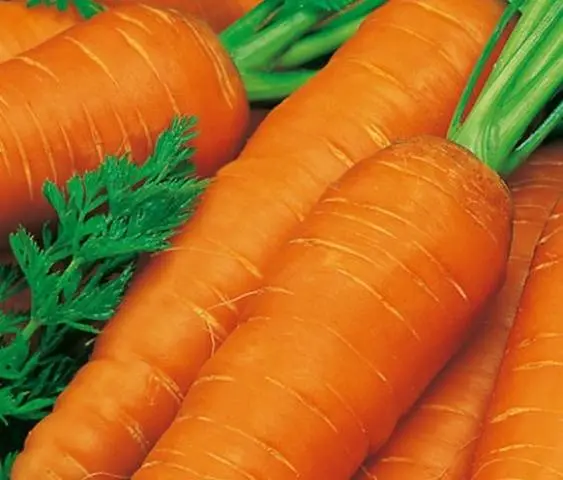
A popular variety among many vegetable growers. Brings good yields on drained peatlands. Carrots grow long, up to a maximum of 20 cm. The flesh has a peculiar reddish tint. Root crops are stored normally, however, the shelf life is limited.
Callisto F1
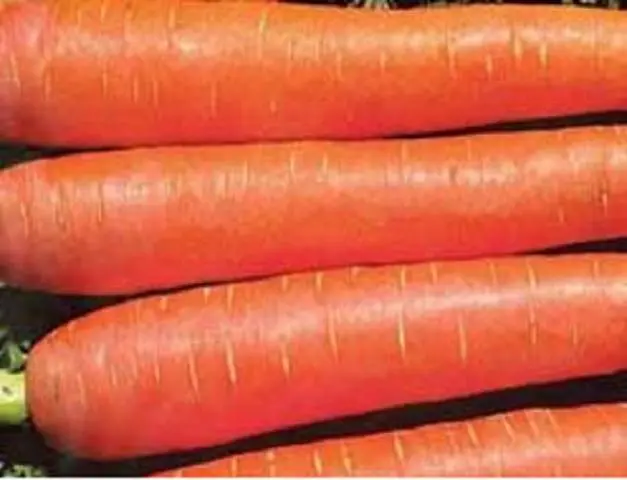
Very successful hybrid for long winter storage. Carrots grow even with smooth skin. The core is so thin that it is almost invisible in the thickness of the pulp. The hybrid is considered high-yielding.
Canada F1
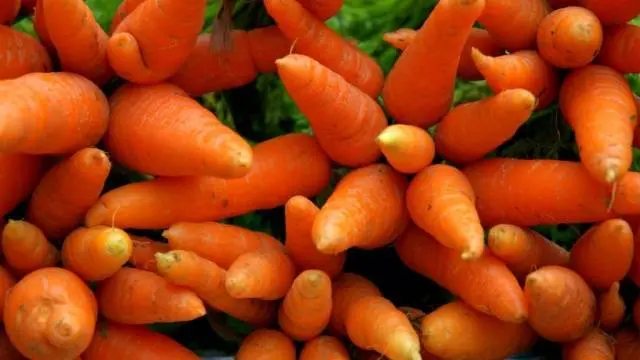
Very long carrots weighing about 200 g brings a high-yielding hybrid of the middle ripening period. The core is the same color as the pulp and is almost invisible. The root crop is saturated with sugar.
Leander
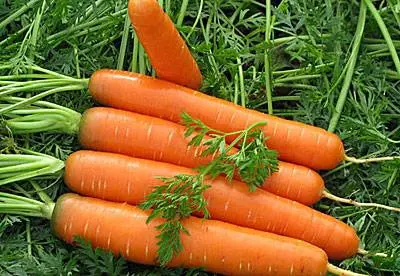
Although carrots belong to mid-season varieties, ripening is very long. Harvest can always be obtained on any soil and under any weather conditions. Root crops grow large, weighing about 110 g, completely hidden in the ground. The core is not too thick. The crop can be stored for a long time.
Late varieties released in Siberia
Growing late carrots is justified by storing root crops all winter until a new early harvest arrives in the beds.
Valeria 5
Carrots grow very long, in good cellars they can lie until spring. The pulp has a peculiar red color, inside of which a rich yellow core is hidden. The yield of the variety is high.
Vita Longa

Carrots are great for storage, processing, but are best used for squeezing juice. The vegetable grows to a great length, does not have the property of cracking. The pulp contains a large amount of sugar.
Yellowstone
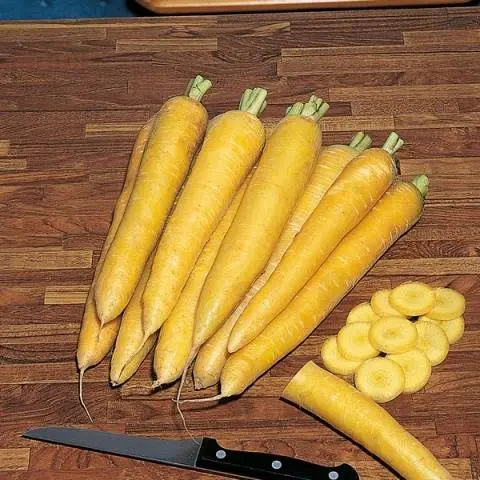
Smooth carrots with a sharp end grow quite large, weighing about 200 g. The unusual yellow color of the pulp is more in demand for cooking. The yield of the variety is good.
Skarla
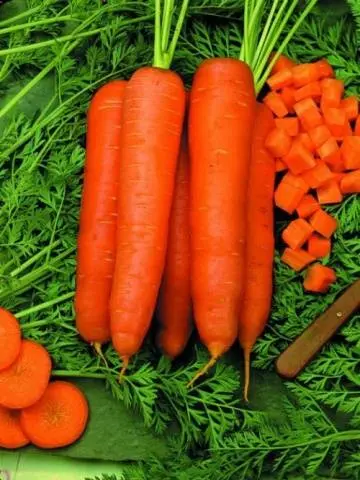
The variety brings long carrots up to a maximum of 22 cm. The variety is considered high-yielding. The mass of a mature root crop is about 300 g. The crop is able to persist until spring.
Totem F1
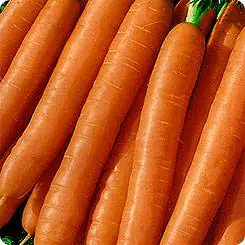
The hybrid brings long carrots with a sharp end. A mature root crop weighs about 150 g. Red color dominates in the core and pulp. The vegetable goes for processing and storage.
Chantene 2461
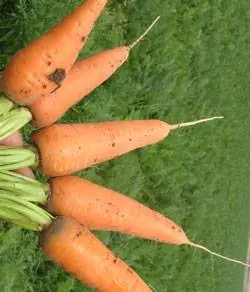
Carrots grow short and thick. Crispy dense pulp does not differ in special taste qualities. The mass of the vegetable varies from 0,3 to 0,5 kg. The crop lends itself to long-term storage.
The video shows the best varieties of carrots:
Conclusion
If we carefully consider the varieties of carrots, then almost all early and medium root crops are able to ripen in Siberia. If there is a greenhouse at home, then carrots will grow excellently indoors.









